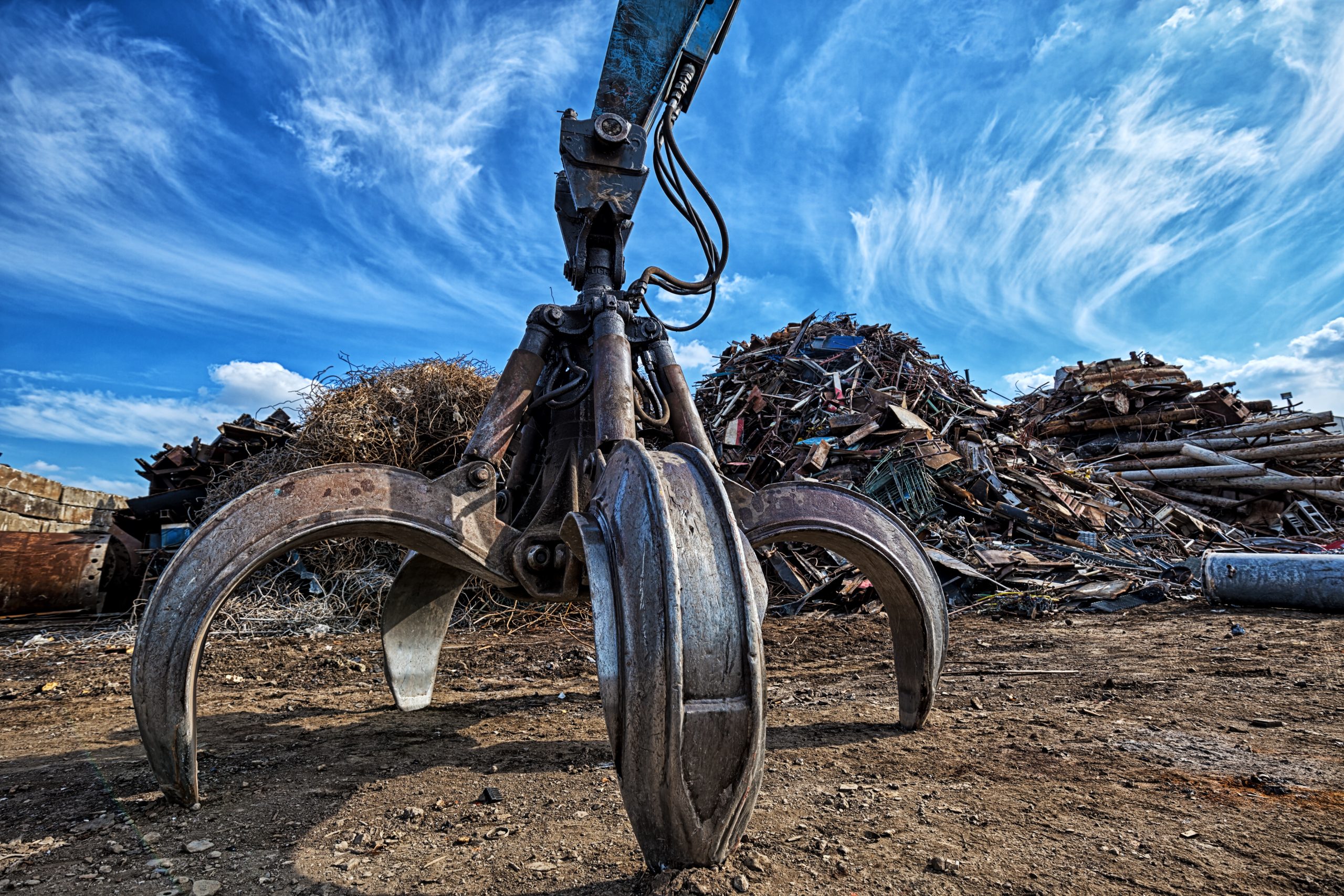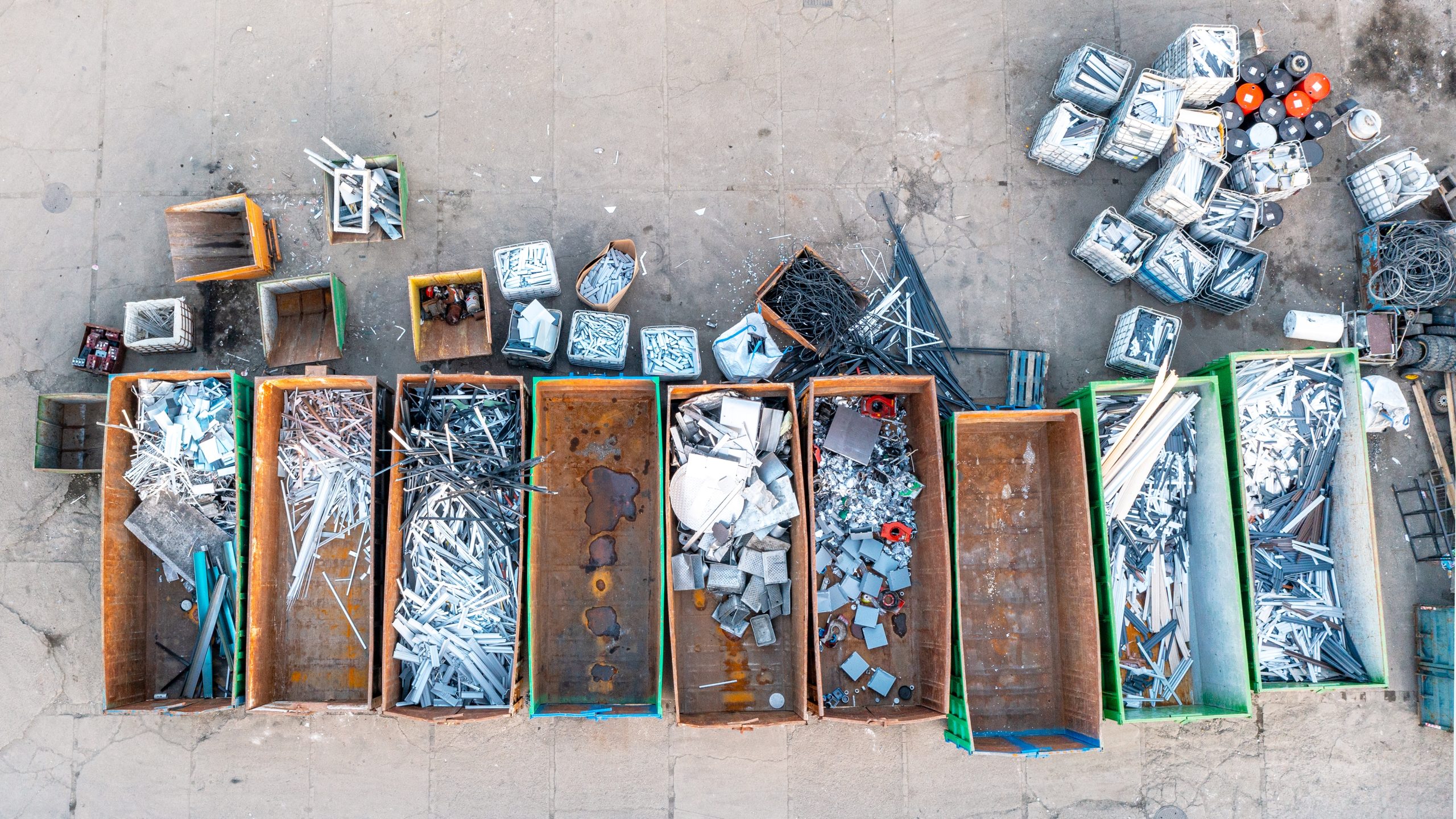Profit from waste: how to manage your scrap inventory
Are you unsure of what to do with your scrap items in inventory? Fear not, with the right strategies, you can turn that mess into money. This article will look into scrap inventory and the best ways to manage it.

Henry Kivimaa

Suppose you’re a furniture manufacturer. You’ve been in the business for several years and established a good brand image. Most of your products fly off the shelves, but some nightstands are slowly morphing into dead stock.
One day, you check your orders and notice someone has purchased one of those nightstands.
You head over to your stock room, climb on a ladder, and start wiggling down the item so you can clean it, package it, and send it to its new home. But as you’re about to grab it with both hands, you lose your balance and drop the nightstand to the ground.
For a brief moment, you consider purchasing a taller ladder but quickly forget about it and start assessing the dropped item. You notice that it has some unrepairable damage.
This nightstand has now become scrap inventory.
What is scrap inventory?
Scrap inventory refers to goods or materials that are no longer usable or sellable in their current form, and are typically intended for disposal or recycling. This type of inventory may include defective products, damaged goods, or excess materials no longer needed for production.
Scrap inventory is usually recorded separately from other types of inventory and may have a lower or zero value in accounting records. Companies may try to minimize scrap inventory by implementing quality control measures or recycling programs to reduce waste and save costs.
Why do you need to record scrap inventory?
Scrap inventory needs to be recorded for several reasons:
- Cost reduction — Scrap inventory can be sold to scrap dealers or recycling companies, generating revenue that can offset some costs associated with production. By recording the value of scrap inventory, a business can accurately track the cost of goods sold and reduce the amount of waste generated, thereby reducing costs.
- Financial reporting — Accurately recording scrap inventory is crucial for financial reporting. It helps to provide a more accurate picture of a company’s financial position and can help with forecasting and decision-making.
- Inventory management — By tracking scrap inventory, a business can better manage its inventory levels, reduce waste, and ensure that it has sufficient supplies on hand to meet demand and avoid stockouts. This can help to improve production efficiency and reduce costs.
- Environmental compliance — Properly disposing of scrap inventory is important for environmental compliance. Some types of scrap inventory may contain hazardous materials that require special handling and disposal procedures to prevent environmental damage. By properly tracking and disposing of scrap inventory, a business can ensure that it is meeting all relevant environmental regulations.
Overall, recording scrap inventory is important for financial, operational, and environmental reasons, and can help businesses to improve their efficiency and profitability.
Types of scrap inventory

Inventory scrap can come in various forms, each with its unique characteristics and challenges. Here are some common ways that can create scrap items in inventory:
- Manufacturing scrap — This type of scrap inventory is generated during the manufacturing process. It includes any raw materials or partially completed products that cannot be used due to defects, errors, or inefficiencies in the production process. For example, metal sheets that are cut up and the remaining excess is too small to use be used anywhere.
- Damaged goods — These products have been damaged during storage, handling, or transportation. This can occur due to mishandling, accidents, or environmental factors such as exposure to extreme temperatures or humidity. Damaged goods may be unsellable or require repair before being sold.
- Expired goods — Perishable goods such as food and medicines have a limited shelf life and can expire if not sold or consumed within a certain time frame. Expired perishable goods cannot be sold or used and must be disposed of.
- Obsolete inventory — These are products or materials that are no longer in demand or valuable. This can occur due to technological changes, market trends, or customer preferences. Obsolete inventory ties up valuable storage space inflating carrying costs and can be a financial burden for a company.
- Defective products — Defective products are flawed or non-functional and do not meet quality standards. Faulty products may be returned by customers, leading to loss of revenue and reputation damage. They may also be caught during quality control inspections and rejected before they are shipped to customers.
Each type of inventory scrap requires different management strategies to minimize waste and prevent financial losses. Companies may turn to production quality control checklists, inventory management systems, and efficient supply chain management practices to reduce inventory scrap and improve profitability.
Accounting for inventory scrap

When it comes to accounting, scrap inventory is often overlooked. But it can be a significant drain on a company’s resources if not managed properly. When scrap inventory is not adequately accounted for, it can lead to inaccurate financial statements and ultimately affect the bottom line of the business.
To effectively manage scrap inventory, accounting professionals must clearly understand the company’s inventory management system. They should be able to identify the types of scrap inventory the company generates and determine the most effective disposal methods. Accounting professionals should also work closely with other departments, such as production and procurement, to ensure proper procedures are in place to minimize scrap inventory and maximize the company’s profitability.
By ensuring that scrap inventory is accurately accounted for and managed, companies can minimize waste and increase profits, improving their overall financial health.
Challenges of managing inventory scrap
Managing inventory scrap can be challenging for several reasons. Some of the common challenges with scrap inventory management include:
- Identifying the root cause — To effectively manage inventory scrap, you need to understand the reasons for its occurrence. The causes of scrap can be diverse, including defects in materials or products, inefficient production processes, human errors, or equipment malfunctions. Identifying the root cause can be difficult and requires a detailed production process analysis.
- Estimating the amount — Determining the amount of scrap generated can be challenging since it may vary from one production batch to another. Inaccurate scrap estimates can lead to overstocking or understocking, resulting in increased costs or lost sales opportunities.
- Reducing costs — Scrap can be expensive, and its management can lead to additional costs, including waste disposal fees, labor costs, and rework expenses. Managing scrap efficiently requires implementing cost-effective measures to reduce the volume of scrap generated, which can be challenging.
- Maintaining accurate records — Accurate record-keeping is essential for efficient scrap management. Maintaining records of the scrap generated, its cause, and the measures taken to prevent it can help identify trends and opportunities for improvement.
- Regulatory requirements — Some materials or products may have specific regulatory requirements for disposal, making scrap management more challenging. Ensuring compliance with regulations can add complexity to the management process.
Overall, effective scrap management requires a comprehensive approach that involves identifying the causes of scrap, implementing cost-effective measures to reduce it, and maintaining accurate records to monitor and analyze trends.
Manage your scrap with Katana

You’ve done your best to minimize scrap inventory but can’t eliminate it completely. The next best thing to do is to manage it well.
Katana’s cloud inventory platform has the features you need to get not only your scrap inventory but also your raw materials, finished goods, and manufacturing processes under control.
With Katana’s real-time inventory management, you can identify any excess inventory immediately and make adjustments on the fly. And with its built-in analytics, you can monitor sales performance and predict future demand to keep your production running optimally.
What’s more, Katana offers seamless integrations with the best business tools out there, like QuickBooks Online, Xero, Shopify, and BigCommerce, making it easy to keep your information synchronized across the platforms. This eliminates the need to manually transfer data between different systems, saving you a lot of hours.
Get your scrap under control with Katana — reach out to the sales team and request a demo today.

Henry Kivimaa
Table of contents
Get inventory trends, news, and tips every month
Get visibility over your sales and stock
Wave goodbye to uncertainty with Katana Cloud Inventory — AI-powered for total inventory control